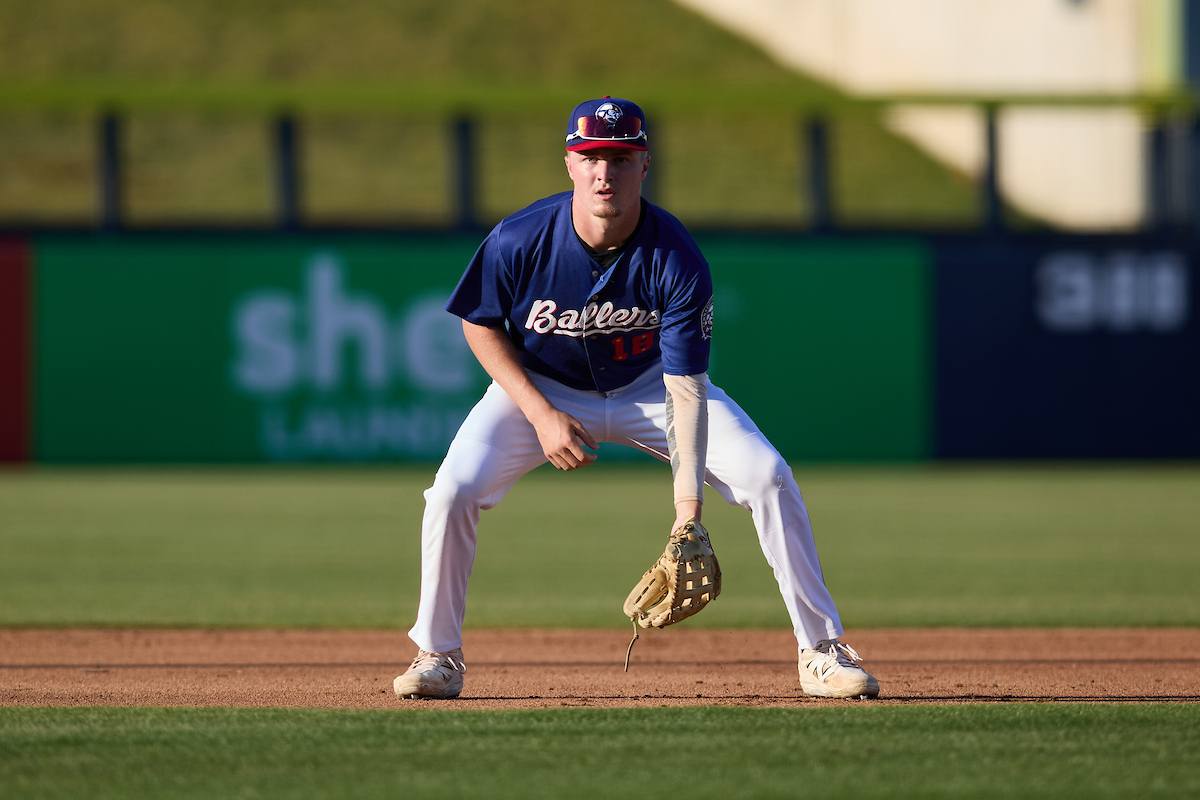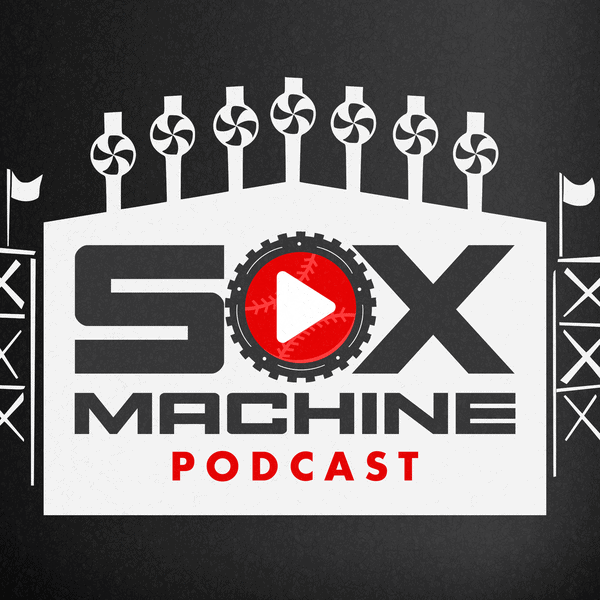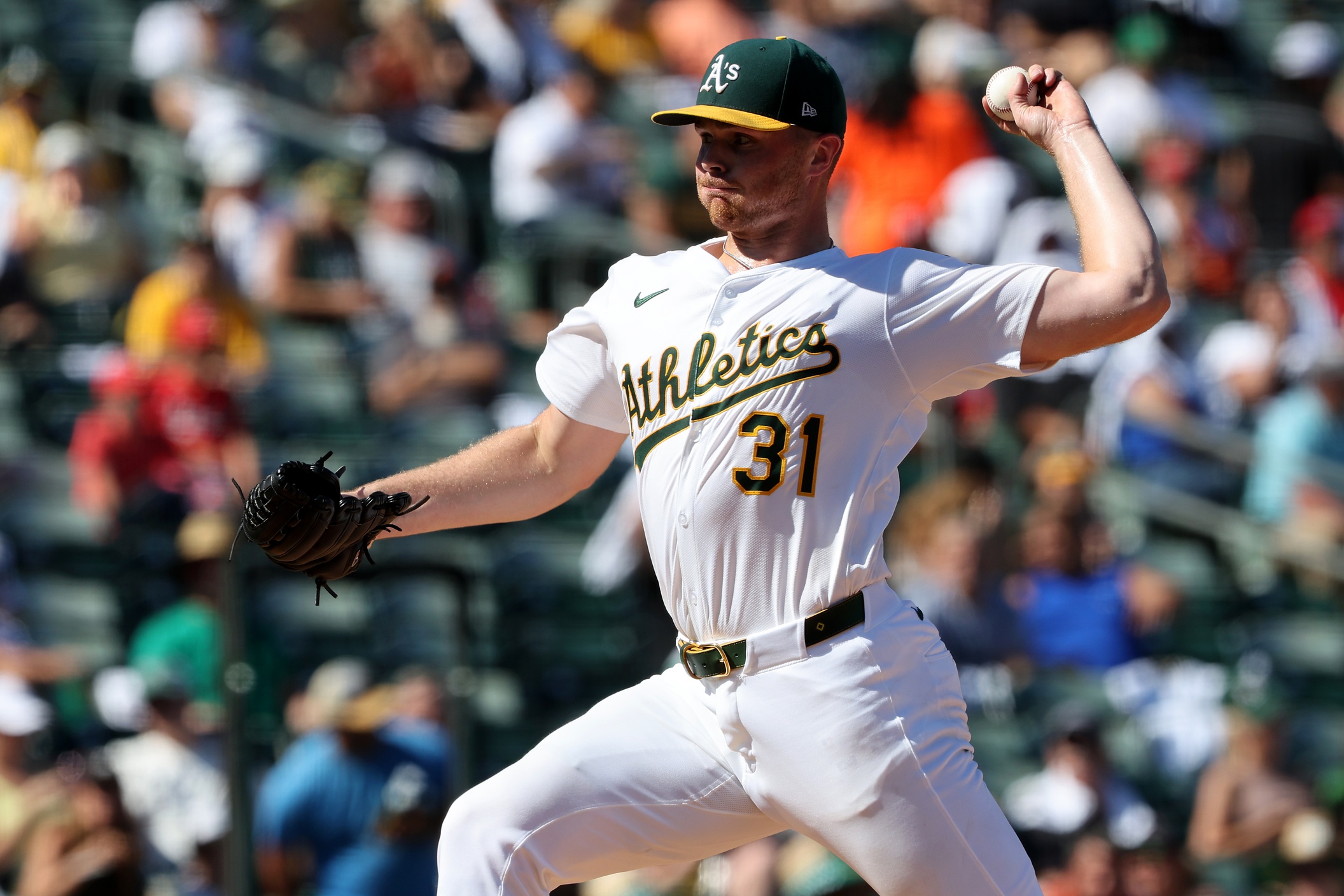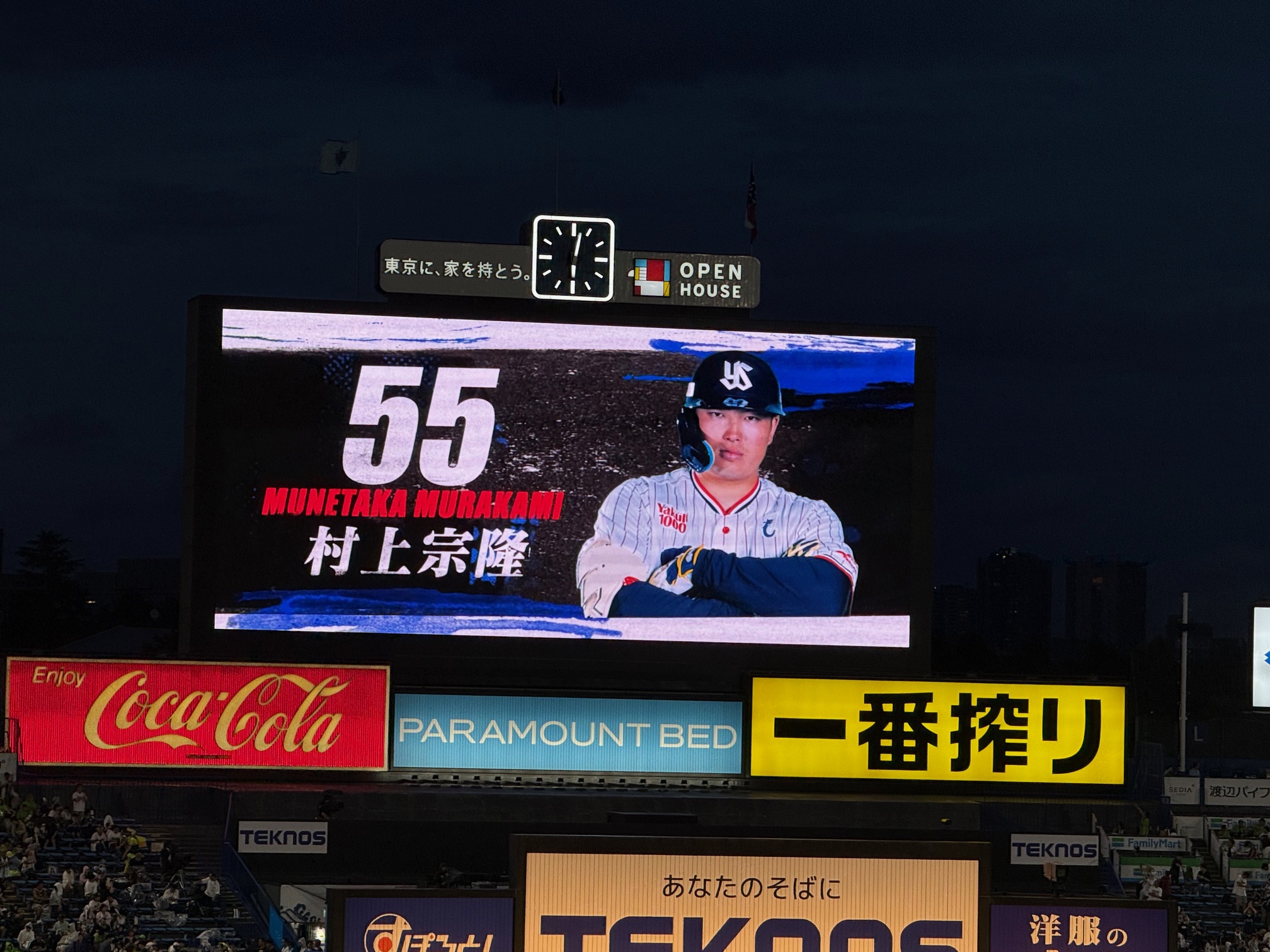Caleb Bonemer didn't need to win the Carolina League MVP to bolster his prospect profile, because he'd already planted himself on top-100 radars by hitting .281/.401/.473 over 107 games as a 19-year-old in his first pro season, including an impressive first impression at Winston-Salem to end his debut campaign.
But an MVP award, even one for an A-ball league, certainly doesn't hurt. The Cannon Ballers are happy to boast about the first MVP in Kannapolis history, the White Sox can brag about their first minor-league MVP in 12 years, and while Bonemer still has levels to go, it seems like those in charge of identifying the best players in the Carolina League over the last few years know ball:
- 2022: Jackson Chourio
- 2023: Samuel Basallo
- 2024: Jaison Chourio
- 2025: Bonemer
If patterns hold, the White Sox will sign Bonemer to an eight-year contract extension at some point over the course of the 2027-28 seasons.
As for precedents within the White Sox organization, I could readily recall that Marcus Semien earned the Southern League's top honors for his emergence back in 2013, but no other names came to mind. A quick glance at league histories to make sure I hadn't forgotten anybody in between then turned into a fall down a rabbit hole, and what follows is an unofficial list of White Sox minor league MVPs. It's a mixed bag of major league stars and org players who dominated levels they were too advanced for, but the ones with no age-for-level concerns generally had successes that translated.
2013: Marcus Semien, Birmingham Barons, Southern League
Semien hit .290/.420/.483 with 15 homers, five triples, 21 doubles, 20 stolen bases, and 84 walks against just 66 strikeouts over 105 games before he was promoted to Charlotte and Chicago over the final two months of the season.
2013: Chris Curley, Winston-Salem Dash, Carolina League
Everybody remembers Semien's breakout season, even if the White Sox ultimately failed to benefit from it. Nobody remembers Curley winning the MVP one level lower the same year, probably because he was three years older than Semien. He hit .280/.350/.471 with 51 extra-base hits and 92 RBIs over 136 games, but he spent the entire season in Winston-Salem for a reason.
2012: Dan Black, Winston-Salem Dash, Carolina League
Now Black's track I can describe without looking up, and not only because I have a soft spot for draft picks out of Purdue. He hit .315/.392/.483 while spending the entire season in Winston-Salem. Though he did that at the advanced age of 24, he got a late start in pro ball, and it was his second year of acing the assignment presented to him. He ultimately didn't hit for enough power to support a profile that was thoroughly first-base-only, but Black parlayed it into a successful jaunt in the KBO.
2011: Ian Gac, Winston-Salem Dash, Carolina League
Black's season stands in contrast to the award-winning year from Gac the year before. He mashed, hitting .279/.358/.535 with 33 homers and 96 RBIs, but besides being 25 at the time, it was his fourth crack at High-A.
2005: Leo Daigle, Winston-Salem Warthogs, Carolina League
It's the same thing with Daigle, who drove in 112 runs over 108 games while slugging .637 because he was 25.
2002: Aaron Miles, Birmingham Barons, Southern League
Now begins a run of actual prospects, starting with Miles. He was a late bloomer who hit .322/.369/.450 over 138 games with Birmingham at age 25, but he used it as a springboard for a nine-year major league career. Only a fraction of it came with the White Sox, who dealt him to Colorado for Juan Uribe in a trade that's still worth celebrating.
2000: Joe Crede, Birmingham Barons, Southern League
1998: Joe Crede, Winston-Salem Warthogs, Carolina League
This is how Crede built his Robin Ventura-replacing bona fides, as he hit .315/.387/.514 as a 20-year-old in HIgh-A, then basically replicated that line with the Barons two years later. Perhaps he would've been able to do it in consecutive years had a toe injury not hampered him for a lot of the 1999 season.
1997: Magglio Ordóñez, Nashville Sounds, American Association
Ordóñez built up a head of steam as he climbed the minor league ladder, but 1997 was the first year he made a name for himself, hitting .329/.364/.476 over 135 games at Triple-A during his age-23 season. He earned a major league call-up that September, finished fifth in Rookie of the Year voting in 1998, and never looked back. This was the fifth and final year of the White Sox's affiliation with Nashville.
1984: Pat Adams, Glens Falls White Sox, Eastern League
The White Sox spent six years hosting their Double-A team in Glens Falls; a city of 15,000 situated just outside the Adirondacks, about an hour north of Albany. They twice produced the Eastern League MVP, although this season was the less impressive showing. Adams hit .283/.378/.501 with 24 homers and 102 RBIs over 137 games, which only made him appealing enough to be a player to be named later to complete a trade the White Sox made for Tom O'Malley that August.
1982: Ron Kittle, Pacific Coast League, Edmonton Trappers
1981: Ron Kittle, Glens Falls White Sox, Eastern League
Kittle, on the other hand, truly menaced the competition en route to multiple league honors. Starting with his age-23 season, he hit .326/.425/.694 with 40 homers over 109 games with Glens Falls, then hit 50 homers with 144 RBIs over 127 games with Edmonton the following year. He capped off the trifecta of award-winning seasons by winning Rookie of the Year for the White Sox in 1983.
1976: Larry Foster, Knoxville Sox, Southern League
1975: Mike Squires, Knoxville Sox, Southern League
1974: Nyls Nyman, Knoxville Sox, Southern League
Nyman was a big deal as he sprinted through the system. His run included a .325/.389/.433 showing at Double-A Knoxville in his age-20 season that he parlayed into one of the best September cups of coffee in White Sox history, as he went 9-for-14 with a triple and two doubles. An errant pitch injured his elbow to cut his audition short, and it was the first of a series of injuries that had him out of baseball entirely by 25.
Squires won it the following year by hitting .304/.393/.397 as a 23-year-old, although modern day evaluators might wince at the idea of a first baseman hitting only three homers. Foster gets you back to the old-for-the-level archetype, as he was 25 and repeating Double-A when he hit .311/.350/.473. He never stuck at Triple-A.
1966: Duane Josephson, Indianapolis Indians, International League
Josephson stood out in the International League for hitting .324/.369/.446 and stealing eight bases as a defensively sound catcher, and went on to have an eight-year career in the big leagues, making the All-Star Game in 1968.
1964: Ed Stroud, Tidewater Tides, Carolina League
Stroud was 24 when he won the A-ball MVP, but it was just his second pro season because the early part of his career included military service. He hit .323/.410/.451 with 72 stolen bases in 135 games, and eventually overcame the late start to play 529 major league games with the White Sox and Senators.
1963: Don Buford, Indianpolis Indians, International League
Buford was the ideal choice for a Triple-A MVP award, in the sense that he hit .336/.406/.457 with 42 stolen bases and 114 runs scored in 152 games, and then never played at the level afterward. He made his MLB debut that September, and then averaged 4 WAR per year over the next nine seasons with the White Sox and Orioles.
1956: Deacon Jones, Dubuque Packers, Midwest League
Jones set the Midwest League record by hitting .409 over 100 games for Dubuque, and the rest of his stats were similarly cartoonish. The overall line was .409/.542/.758, as he hit 26 homers, six triples and 25 doubles while drawing 102 walks over 446 plate appearances as a 22-year-old, but he was unable to take advantage of any momentum because military service cost him the next two full seasons. You can read about the rest of his career in 2023's In Memoriam post.
1947: Tony Lupien, Hollywood Stars, Pacific Coast League
Lupien hit .341/.410/.520 with 71 extra-base hits and 40 stolen bases for the Hollywood Stars, although the counting stats are less impressive than the rate stats since he played in 186 games that year. He was 30 years old at the time, and had logged more than 400 major league games during the years that MLB rosters were affected by World War II before serving in the Navy himself.
Other Lupien fun facts: His actual name was Ulysses John Lupien. He graduated from Harvard. He was an early advocate for labor protections in baseball, and he was John Cena's grandpa.
1939: Gil English, St. Paul Saints, American Association
English played nearly 1,800 minor leagues games over his 17-year professional career, including 1,400 in what was called Double-A. He played 139 of those games under the White Sox's employ in St. Paul, hitting .343/.407/.555 with 19 homers, 92 RBIs and 97 runs scored over 139 games during his age-29 season.
1938: Ollie Bejma, St. Paul Saints, American Association
The year before, the 30-year-old Bejma posted even more impressive numbers, hitting .326/.393/.548 with 25 homers, 65 extra-base hits, 114 RBIs and 106 runs scored over 145 games. Unlike English, Bejma was able to parlay that into major league time with the White Sox. He had a decent year as a utility infielder on the bench of the 1939 team before he was traded to Cleveland.






